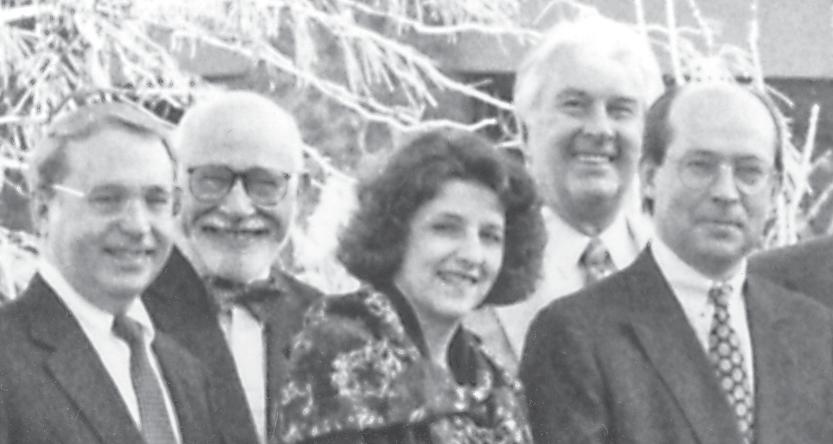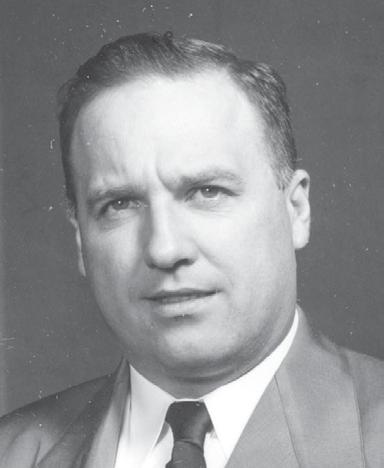
3 minute read
Academy Evolved to Meet Needs of Members in Private Practice
After completing his residency at the University of Minnesota in 1948, young Joseph A. Resch, MD, joined the neurology and psychiatry clinic of Harold Noran, MD, in downtown Minneapolis. While his mentor A.B. Baker was launching the AAN, Resch was on the cusp of a new era.

“As far as I know, I was the first one who was going to do only neurology,” Resch said in 2008, “but to be honest I had to do psychiatry because my office did it. So, for a number of years I did psychiatry, but I worked a lot to build up neurology. That was my role and I can remember Dr. Baker, when we were at a meeting at St. Paul, wanted to tell this very well-known psychiatrist and neurologist that I was getting by with doing some neurology. The guy wouldn’t believe it and he said, ‘Joe, show me.’ I kept a little card of the consults I was doing, so I showed the guy my month’s work. I would list what they had and so on, and the old man [Baker] wanted to show him. He said, ‘You see? He’s doing this!’”
While the AAN was designed to serve as an alternative to the American Neurological Association and include clinic-based practicing neurologists, academic members of the Academy held sway over the organization and controlled the key leadership positions—including president. By the mid-1960s, this created fissures in the organization. “About 15 years after the AAN had gotten going, it too went in the direction of academia, answering the needs for courses in neuropathology, neurophysiology, etc.,” recalled Herbert E. Rosenbaum, MD, FAAN, in 2008. “All but excluded were the interests of private physicians. There began an uproar to where the clinicians said, ‘The hell with them,’ and launched the Society of Clinical Neurologists, and later the Southern Clinical Neurological Society and others. These were organizations where clinical neurologists would have some degree of shared interests and a little pride. That sort of went to where, if carried far enough, it could fragment the Academy.

“About 1967, at the Annual Meeting, Joe Foley was past president, and he and I were very good friends. We got together in the bar and had a few drinks and I told Joe, ‘You are going to lose the whole damn Academy if you don’t change its attitude. It’s going into the mode of ANA and it’s not proper.’
Menninger Clinic in Topeka. We were able to get this thing going.
“It came at a good time because Medicare was being born. The government was interested in guidelines for various specialties. The Practice Committee took over and published the first guidelines for hospitalization of neurology patients. That started us off. Nelson Richards came along after that [as chair of the Practice Committee]. He was the first member in private practice to become president of the organization. I was on nominating committee. For several years I tried to get a practicing physician into office. They felt they were obliged to compete with the academicians. But Nelson was accepted and the relationship between the clinical practitioners and academicians improved.”
Nelson G. Richards, MD, FAAN, had been involved in many societies and their committees including the American Medical Association, American College of Physicians, American Society of Internal Medicine, and helped form state and local neurological societies. “I joined the ASIM, where I got my orientation experience in practice management. I was exposed to their activity and became active in their committees. I carried this experience to the Academy organization during my presidency. Advice from their membership, staff, and executive director was very supportive in my understandings of medical organizations and committees. Advice came along during difficult times at the Academy. I used my observations at ASIM for the structure of the Academy.”
As Past President Jack Whisnant noted in The American Academy of Neurology: The First 50 Years, “Nelson Richards helped elevate the importance of the practice of neurology and our role in supporting this. This was evidenced by the growing role of the Practice Committee, which shifted from staffing support provided by the American Society of Internal Medicine to Academy-staff support in the early 1980s. The Practice Committee focused its sights on issues affecting reimbursement and third-party payers, Medicare, and neurophysiological tests.”

Joseph
“Joe asked, ‘What can be done about it?’ “I said, ‘If you are really serious, I would like to start a practice committee,’ which we did not have at that time. Joe said ‘Okay, will you do it?’ I said I would try. I was chair for the ensuing five or six years. I worked with Jack Segerson, head of neurology at the
According to Laura B. Powers, MD, FAAN, past chair of the Medical Economics and Management Committee, Richards was also instrumental in developing the AAN’s relationship with the American Medical Association, especially in the areas of CPT and the Relative Value Update Committee (RUC). “Nelson, through his leadership, managed to acquire a permanent seat for the AAN at the RUC, which






